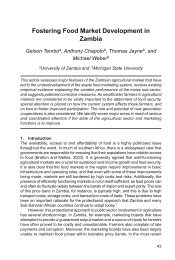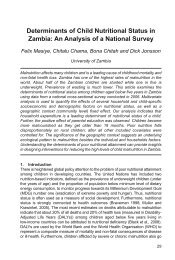Introduction to Basic Legal Citation - access-to-law home
Introduction to Basic Legal Citation - access-to-law home
Introduction to Basic Legal Citation - access-to-law home
You also want an ePaper? Increase the reach of your titles
YUMPU automatically turns print PDFs into web optimized ePapers that Google loves.
growing pressure on those ultimately responsible for citation norms, namely the courts, <strong>to</strong><br />
establish new rules that no longer presuppose that some one publisher's print volume (created<br />
over a year after the decisions or statutes it compiles were handed down or enacted) is the key<br />
reference. Several jurisdictions have responded; many more are sure <strong>to</strong> follow. On the other<br />
hand, work habits and established practices die hard, especially when they align with vested<br />
commercial interests.<br />
In 1996, the American Bar Association approved a resolution recommending that courts adopt<br />
a uniform public domain citation system "equally effective for printed case reports and for<br />
case reports electronically published on computer disks or network services." It proceeded <strong>to</strong><br />
lay out the essential components of such a system. The American Association of Law<br />
Libraries had previously gone on record for "vendor and media neutral" citation. An<br />
increasing number of state courts have adopted citation schemes embodying the core elements<br />
recommended by these national bodies. For example, North Dakota state court opinions<br />
released after January 1, 1997 are <strong>to</strong> be cited according <strong>to</strong> the following North Dakota<br />
Supreme Court rule:<br />
When available, initial citations must include the volume and initial page number of the<br />
North Western Reporter in which the opinion is published. The initial citation of any<br />
published opinion of the Supreme Court released on or after January 1, 1997, contained in a<br />
brief, memorandum, or other document filed with any trial or appellate court and the<br />
citation in the table of cases in a brief must also include a reference <strong>to</strong> the calendar year in<br />
which the decision was filed, followed by the court designation of "ND", followed by a<br />
sequential number assigned by the Clerk of the Supreme Court. A paragraph citation should<br />
be placed immediately following the sequential number assigned <strong>to</strong> the case. Subsequent<br />
citations within the brief, memorandum or other document must include the paragraph<br />
number and sufficient references <strong>to</strong> identify the initial citation.<br />
N.D. R. Ct. 11.6 (b).<br />
The Rule provides examples, e.g.:<br />
• Smith v. Jones, 1997 ND 15, 600 N.W.2d 900 (fictional).<br />
• Smith v. Jones, 1996 ND 15, 21, 600 N.W.2d 900 (fictional).<br />
For decisions of the North Dakota Court of Appeals, the formula is the same with the<br />
substitution of "ND App" for "ND." As intended, the system facilitates precise and immediate<br />
reference <strong>to</strong> a portion of a North Dakota appellate decision that is as effective whether the<br />
reader follows the citation using the court's own Web site or one of the commercial online<br />
services or finds it in a volume of the North Western Reporter. Since the key citation<br />
elements, including paragraph numbers, are embedded in each decision by the court, they are<br />
carried over in<strong>to</strong> that print reporter and the commercial electronic services. As a<br />
complementary measure, the North Dakota Supreme Court Web site furnishes the North<br />
Western Reporter citations for all decisions in its database, which currently reaches back<br />
through 1966. Consequently, researchers need not consult a commercial source <strong>to</strong> obtain the<br />
volume and page numbers associated with over four decades of decisions.<br />
7




